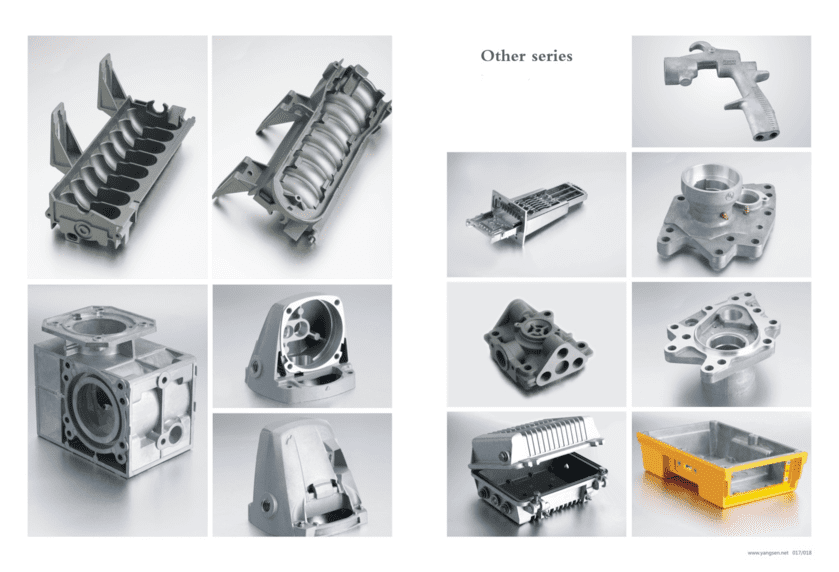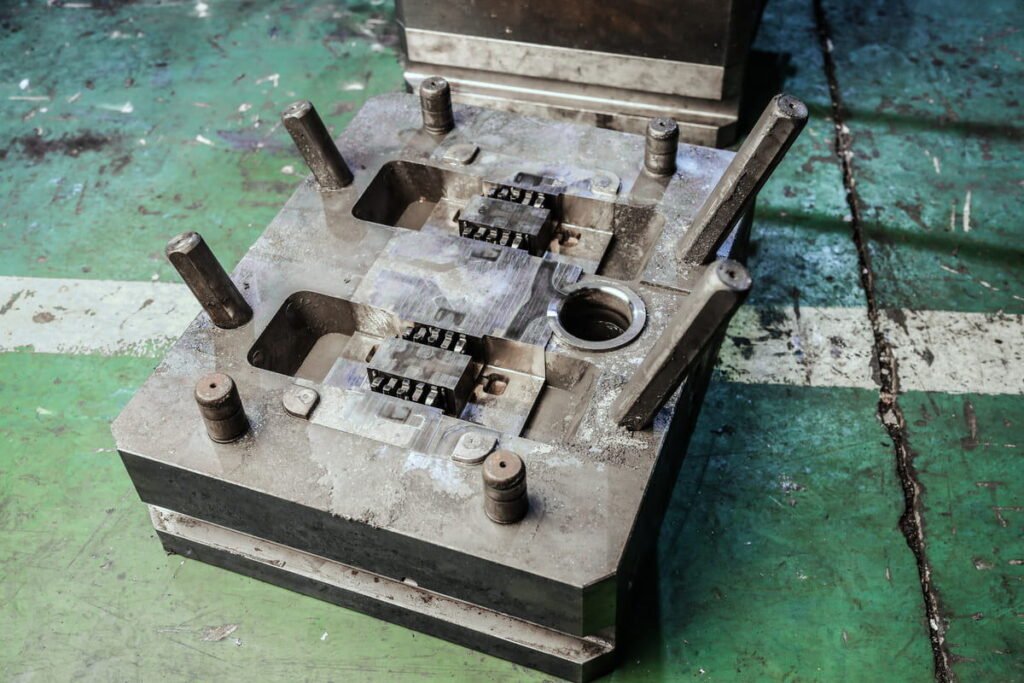Castingod is a leading high pressure die casting and machining of parts company in China
Castingod has been in the market for decades and today is leading the in high pressure die castings in China. The company follows international quality standards and constantly invests in technology and automation, which make the manufacture of Die Cast Parts more reliable and assertive.
Castingod also offers a guarantee on the Die Cast Parts produced and has representatives in several Chinese states, which brings more confidence and tranquility at the time of purchase.
Check out the 5 significant advantages of purchasing high pressure die castings with Castingod:

1. High quality throughout high pressure die casting process
The Castingod Foundry casts parts in gray, nodular, and white iron, and serves the most demanding markets by using state-of-the-art equipment and following strict quality standards.
With the foundry process carried out according to national and international quality standards, the customer is guaranteed that the product was manufactured and delivered with the best materials on the market and according to the requested project.
To further guarantee the quality of the products, Castingod has a shipping sector, where the Die Cast Parts (even after having been machined) are rigorously analyzed again, to later be organized, packed and sent to the customer.
2. Reliability with aluminum die casting process automation
Precision is one of the main benefits of industrial automation, in addition to quality assurance, increased production capacity and reduced delivery time.
Castingod works with a fully automated manufacturing process, providing an increase in production capacity and bringing high dimensional accuracy in aluminum alloy, excellent finishing to die casting parts and a reduction in the level of parts with scrap.
The company also has a Horizontal Machining Center, which guarantees more quality, precision and high speed in the production of parts for the automotive industry and many more.
Major Die Casting Parts include:
- Die casting parts of the automotive industry
- Die casting parts of the aerospace industry
- Medical Die casting parts
- Electrical die casting parts

3. Precision with cast and machined parts, ready for assembly
Machining is the casting process that brings molten metal aluminum die castings to the exact complex shapes and sizes intended prior to manufacture. It is at this stage that the final dimensions and geometries of the product are checked, ensuring the perfect fit in the designated equipment.
Significant die cast advantage include lower tooling cost, high dimensional tolerances with high volume, and lower melting points. Similarly, in cast aluminum other casting processes
In this die casting manufacturing process, we use:
Acquiring this service with Castingod means eliminating risks for the client, investing in raw materials, labor, equipment, and quality certifications, in addition to providing greater tooling cost predictability, and guaranteeing high quality and precision, in addition to agility in the production process, since you will receive the piece ready for assembly.
4. Ease with the assembly service of sets
The company offers traction axle assembly services for the agricultural sector, with manufacturing processes practically entirely in the Castingod Foundry. The customer who buys ready-made and assembled sets saves on investments and time in production, speeds up aluminum die casting process, and reduces steps in the company.

5. The differential of offering modeling and painting services for parts
Modeling and painting services are offered both for repairing tools and parts, as well as for the foundry process itself.
The work carried out in the modeling is manual and it is where the repairs are carried out on the parts. In the painting process, two forms of application are used: immersion or with a spray gun, and in both, adherence and layer control is carried out to guarantee the quality of the services.
Die molten metal aluminum die castings
Die molten metal aluminum casting involves forcing liquid metal under high pressure into the cavity of the high pressure die casting mold. It is used for alloys: Al, Zn, PB, Sn, Mg, and Cu

The characteristics of die high pressure die casting are:
- high fuel efficiency dedicated especially to multi-series production
- high durability of forms,
- small deviations and dimensional stabilization of molten metals aluminum die castings,
- low surface roughness
- reduction or elimination of machining, cleaning, and surface blisters of details
- obtaining better physical, chemical, and high mechanical properties compared to other molten metals aluminum die casting methods,
The Ability to Make Details of complex shapes,
- obtaining lighter molten metal aluminum die castings in relation to sand casting moulds
- the ability to make complex thinner walls molten metal aluminum die castings with insertsThe factors limiting the use of pressure molten metal aluminum die castings include:
- Large investment outlays in pressure die casting machines, stationary furnaces, melting and metal loading systems
- Long period of production preparation resulting from the need to make a pressure mold,
- Limited size and weight of molten metal aluminum die castings,
- The possibility of making molten metal aluminum die castings only from selected molten metal aluminum die castings alloys,
Tendency to the Porosity of Aluminum Alloy Details
Die high pressure die casting machines are used for die molten metal aluminum die castings. The basic feature of the classification of this group of machines is their division into hot chamber systems and cold chamber machines systems.
Hot-chamber machines are used for high pressure die casting fusible alloys: Pb, Sn, Zn, and with a special design for high pressure die casting Mg alloys. Cold chamber die casting machines are used for high pressure die casting complex pressure molten metal aluminum die casting from Mg alloys and molten metal aluminum die casting from Al and Cu alloys.
The tool used for high pressure die castings is a high pressure die casting mold.
It consists of the following groups of elements:
- inserts that shape molten metal aluminum die casting
- elements ensuring rigidity and dimensional stability of the structure: plates of molds and ejectors, casings
- actuators and mechanisms enabling the movement of the moving parts of the sand mold,
- elements of the heating and cooling system to maintain the optimum temperature of the mold,
- ejectors to remove the high pressure die casting from the steel mold.
- The high pressure die casting process can be divided into the following stages:
- lubrication of two die halves of the mold with a special agent,
- mold closure,
- piston lubrication,
- flooding the infusion chamber with liquid metal,
- optional removal of trapped air from the mold using a vacuum system,
- filling the mold with metal under pressure using a piston,
- cooling of the liquid metal in the mold and solidification of the high pressure die casting,
- mold opening,
- removing the high pressure die casting from the mold,

Cooling and lowering the high pressure die casting temperature
The casts are subjected to subsequent technological die casting operations, of which the most common are: removal of the gating system/trimming, cleaning, abrasive and vibration treatment, machining, washing, and packaging.
A good high pressure die casting must be properly designed and constructed. In its design, you should avoid:
- sharp transitions
- uneven wall thicknesses
- too thick walls and areas
- thin spots and ribs,
large areas without reinforcement of corners and ribs.
In order to reduce the porosity of the details and remove air from them, venting channels and overflows are used in mold construction.
In order to maintain the most constant and technologically required temperature of the mold, its cooling is used. Motherboards are cooled, and sometimes cartridges and stationary cores are as well.
Materials for molds should be characterized by a low coefficient of thermal expansion, resistance to fatigue and creep at elevated temperatures, resistance to corrosive action and erosion of liquid metal, corrosion resistance, good thermal conductivity, dimensional stability after heat treatment, and sufficient machinability. The decisive load conditions are mechanical and thermal shocks.
Preparation of alloys
The best effects of our mass production are preceded by proper preparation of the material. If this step is carried out accurately and with due care, the final high pressure die casting will be characterized by optimal strength and a compact structure.
The Alloys for aluminum casting are prepared in a central melting shop equipped with medium-frequency induction furnaces with a capacity of 1500 kg with an automatic control and monitoring system.
Zinc alloys are melted in a corrosion-resistant furnace equipped with an automatic charging system. Each metal melt is approved based on the examination of the chemical composition and the degree of gassing.
Once the metal is approved for production, the next step is pressure high pressure die casting.
Cast Thin Walls High Pressure Die Casting
The casting method we use allows us to create products with extremely high accuracy and durability, as well as high-quality surfaces. We have specialized horizontal cold-chamber machines and vertical hot-chamber machines with clamping force from 80 to 1000 tons.
When making the aluminum die casting process, an automatic permanent mold spraying, pouring, and high-volume die-casting collection system is used. We have the ability to cast in a vacuum. Casting methods ensure the stabilization of high-volume production parameters, which at the same time contributes to increasing the efficiency of work.
Our company uses the latest technological achievements to increase the durability of mold surfaces, which allows for increasing their operating parameters, including, above all, corrosion resistance to mechanical damage.
It is possible to make products using a vacuum. Stabilization of the temperature of the molds is ensured by the use of heating and cooling devices.

Castings for the automotive and electromechanical industries
Taking into account the requirements of the automotive and electromechanical industries, we are able to produce details and obtain the following parameters in series: purity below 4 mg of impurities per manufactured detail.
Casting machining
Made aluminum die casting process can be mechanically or manually processed. Specialized machining is carried out on five-axis horizontal injection and vertical injection centers and numerically controlled lathes. In the field of surface treatment, we offer abrasive and vibration treatment, shot blasting and polishing.
Thanks to this, depending on the customer’s preferences, we can obtain a smooth, rough, matte, as well as glossy surface.
Why Castingod High pressure Aluminum Die Casting Company?
Our company uses various methods of securing products during die casting manufacturing process. When choosing the right technique, we are primarily guided by the safety of individual products. We use packaging made of paper and cardboard, which will best protect the products against mechanical damage.








